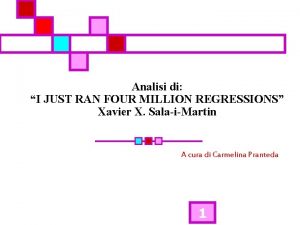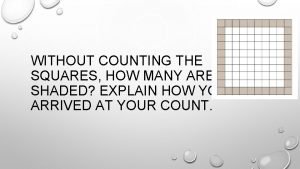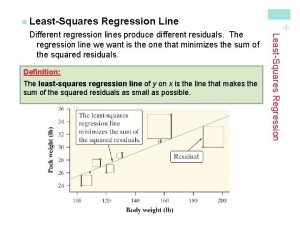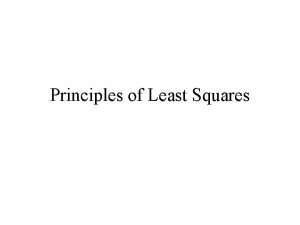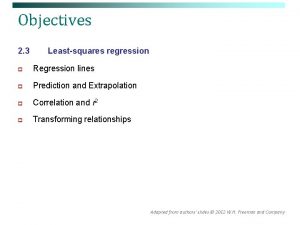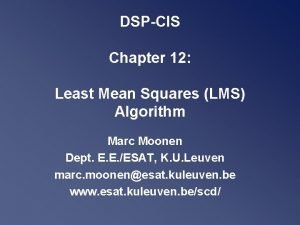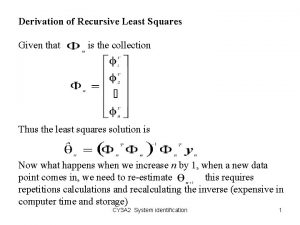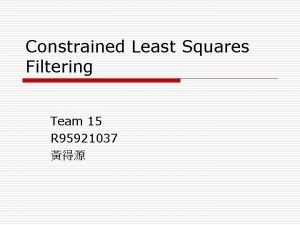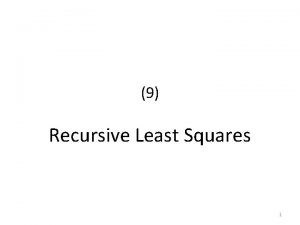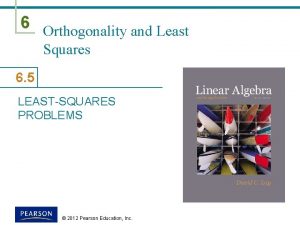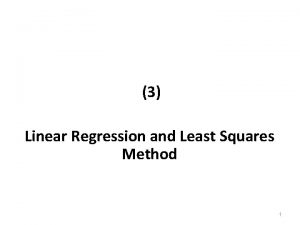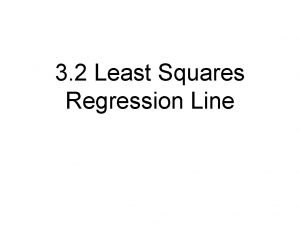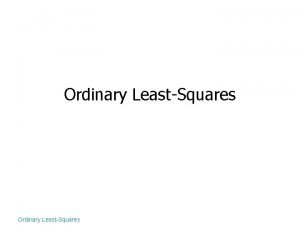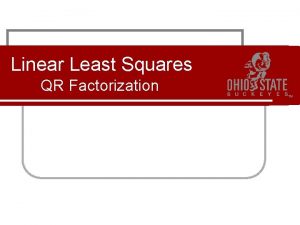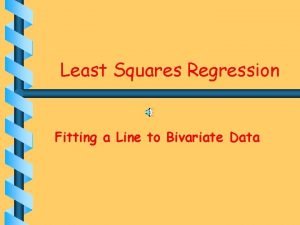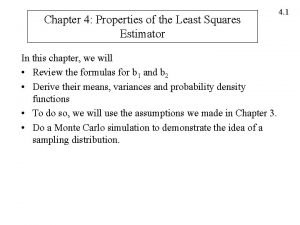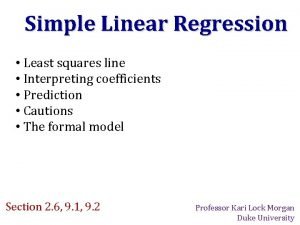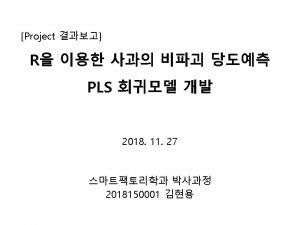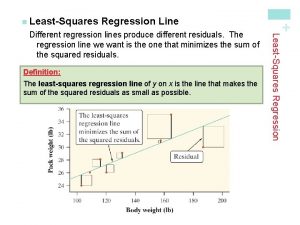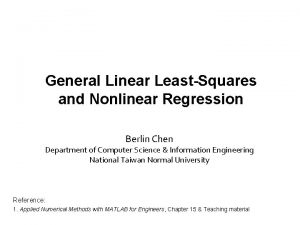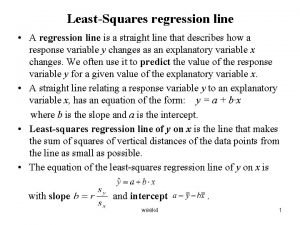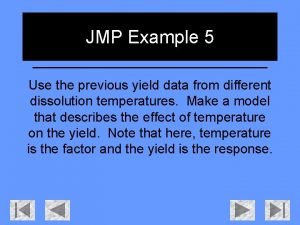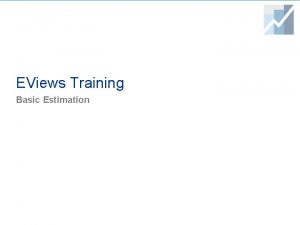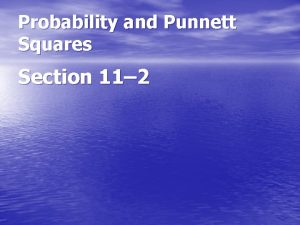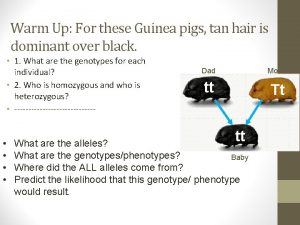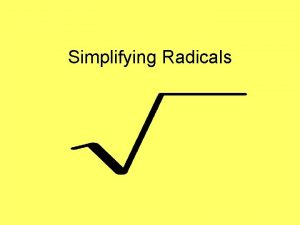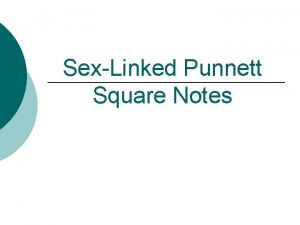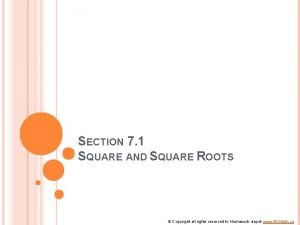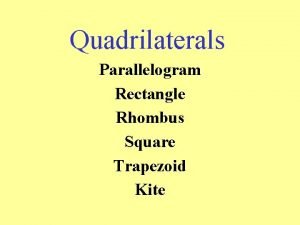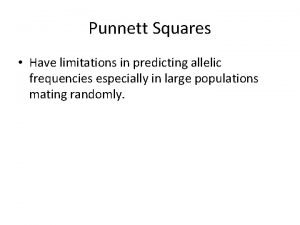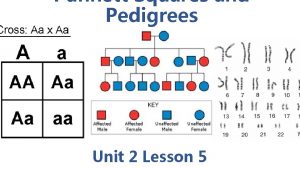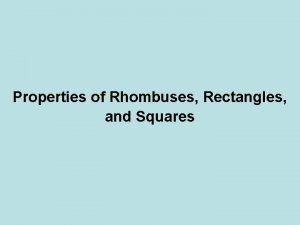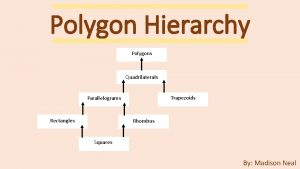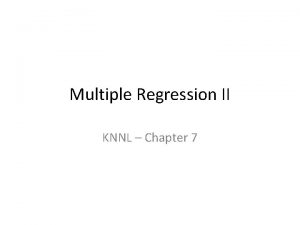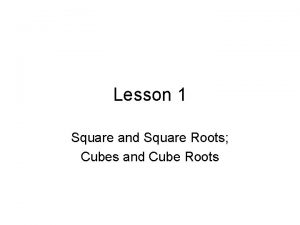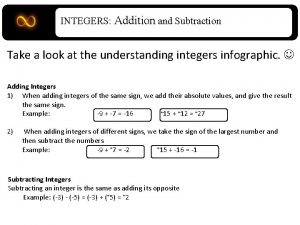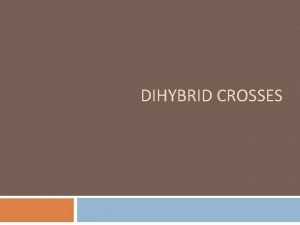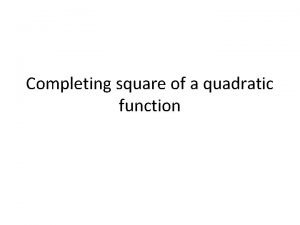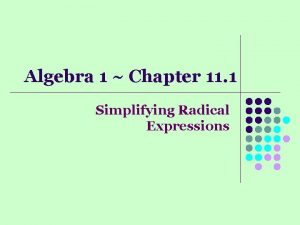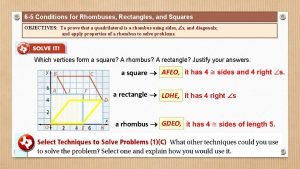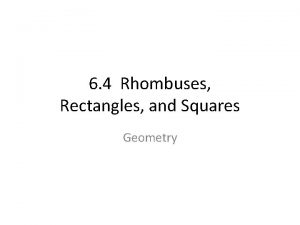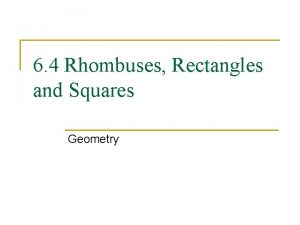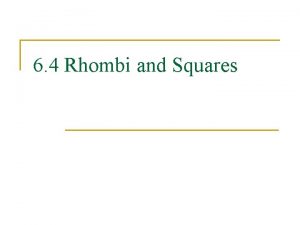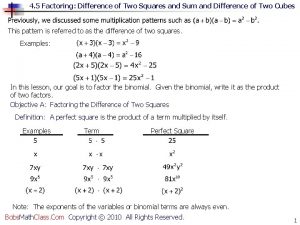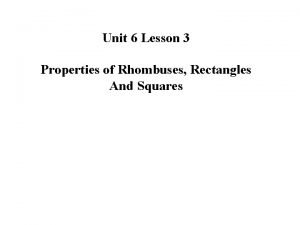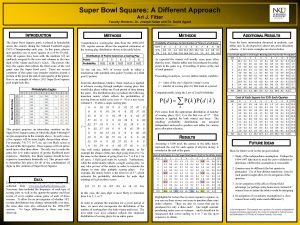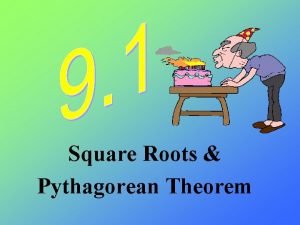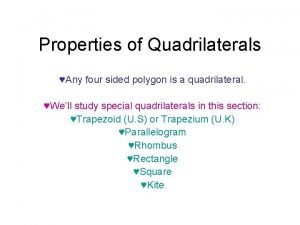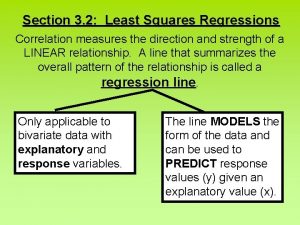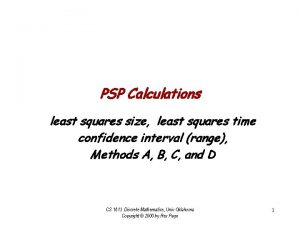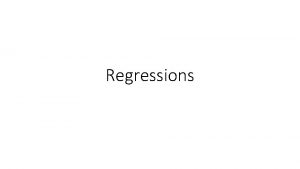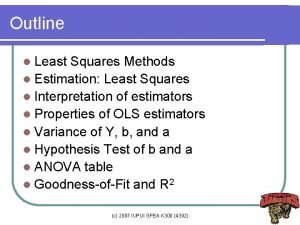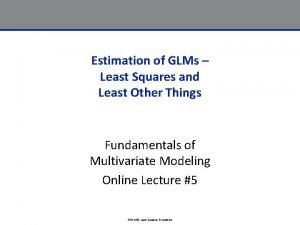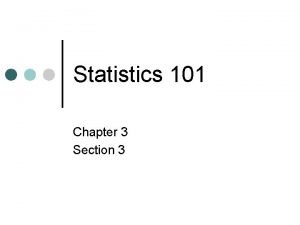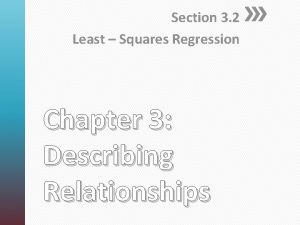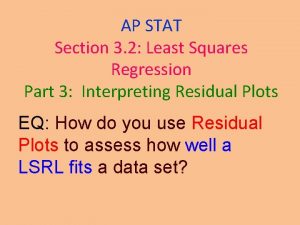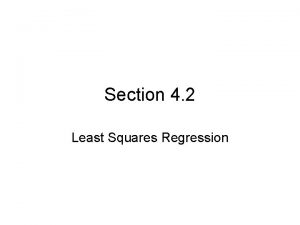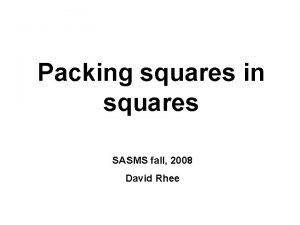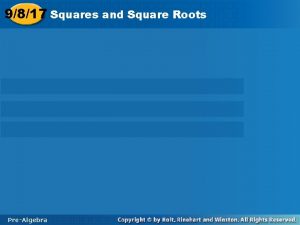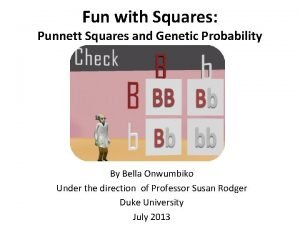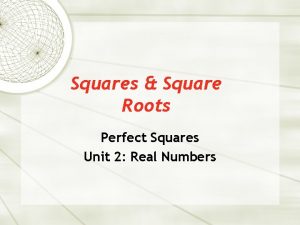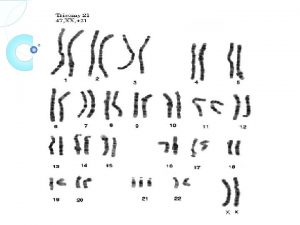3 2 Least Squares Regressions Section 3 2











































































- Slides: 75

3. 2: Least Squares Regressions

Section 3. 2 Least-Squares Regression After this section, you should be able to… ü INTERPRET a regression line ü CALCULATE the equation of the least-squares regression line ü CALCULATE residuals ü CONSTRUCT and INTERPRET residual plots ü DETERMINE how well a line fits observed data ü INTERPRET computer regression output

Regression Lines A regression line summarizes the relationship between two variables, but only in settings where one of the variables helps explain or predict the other. A regression line is a line that describes how a response variable y changes as an explanatory variable x changes. We often use a regression line to predict the value of y for a given value of x.

Regression Lines Regression lines are used to conduct analysis. • Colleges use student’s SAT and GPAs to predict college success • Professional sports teams use player’s vital stats (40 yard dash, height, weight) to predict success • Macy’s uses shipping, sales and inventory data predict future sales. • MDCPS uses student data to evaluate teachers using the VAM model

Regression Line Equation Suppose that y is a response variable (plotted on the vertical axis) and x is an explanatory variable (plotted on the horizontal axis). A regression line relating y to x has an equation of the form: ŷ = mx + b In this equation, • ŷ (read “y hat”) is the predicted value of the response variable y for a given value of the explanatory variable x. • m is the slope, the amount by which y is predicted to change when x increases by one unit. • b is the y intercept, the predicted value of y when x = 0.

Regression Line Equation 0. 0908 x +16. 3

Format of Regression Lines •

Interpreting Linear Regression • Y-intercept: A student weighing zero pounds is predicted to have a backpack weight of 16. 3 pounds (no practical interpretation). • Slope: For each additional pound that the student weighs, it is predicted that their backpack will weigh an additional 0. 0908 pounds more, on average.

Interpreting: Mad Libs • Slope: For each additional (insert x context), it is predicted that (insert y context) an additional _____ more/less, on average. • Y-intercept: (Insert x-context) of zero _______ is predicted to have (insert y-context here) of ______. Yes/no practical interpretation; (explain).

Interpreting Linear Regression •

Interpreting Linear Regression •

Interpreting Linear Regression •



Check Your Understanding: Calculate the Regression Equation A crazy professor believes that a child with IQ 100 should have a reading test score of 50, and that reading score should increase by 1 point for every additional point of IQ. What is the equation of the professor’s regression line for predicting reading score from IQ? Be sure to identify all variables used.

Check Your Understanding: Calculate the Regression Equation •

Check Your Understanding: Interpreting Regression Lines & Predicted Value Data on the IQ test scores and reading test scores for a group of fifth-grade children resulted in the following regression line: predicted reading score = − 33. 4 + 0. 882(IQ score) (a) What’s the slope of this line? Interpret this value in context. (b) What’s the y-intercept? Explain why the value of the intercept is not statistically meaningful. (c) Find the predicted reading scores for two children with IQ scores of 90 and 130, respectively.

predicted reading score = − 33. 4 + 0. 882(IQ score) (a) Slope = 0. 882. For each 1 point increase of IQ score, the reading score is predicted to increase 0. 882 points, on average. (b) Y-intercept= -33. 4. If the student has an IQ of zero, which is essential impossible (would not be able to hold a pencil to take the exam), the score would be -33. 4. This has no practical interpretation. (c) Predicted Value: 90: -33. 4 + 0. 882(90) = 45. 98 130: -33. 4 + 0. 882(130) = 81. 26 points.

Least-Squares Regression Line Different regression lines produce different residuals. The regression line we use in AP Stats is Least-Squares Regression. The least-squares regression line of y on x is the line that makes the sum of the squared residuals as small as possible.

TI-NSpire: LSRL 1. Enter x data into list 1 and y data into list 2. 2. Press MENU, 4: Statistics, 1: Stat Calculations 3. Select Option 4: Linear Regression. 4. Insert either name of list or a[] for x and name of list or b[] of y. Press ENTER.



TI-NSPIRE: LSRL to View Graph 1. Enter x data into list 1 and y data into list 2. Be sure to name lists 2. Press HOME/ON, Add Data & Statistics (purple) 3. Enter variables to x and y axis. 4. Click MENU, 4: Analyze 5. Option 6: Regression 6. Option 1: Show Linear (mx + b), ENTER


Residuals A residual is the difference between an observed value of the response variable and the value predicted by the regression line. That is, residual = actual y – predicted y (remember AP) residual = y - ŷ Positive residuals (above line) residual Negative residuals (below line)

How to Calculate the Residual 1. Calculate the predicted value, by plugging in x to the LSRE. 2. Determine the observed/actual value. 3. Subtract. 0. 0908 x +16. 3

Calculate the Residual 1. If a student weighs 170 pounds and their backpack weighs 35 pounds, what is the value of the residual? 2. If a student weighs 105 pounds and their backpack weighs 24 pounds, what is the value of the residual? 0. 0908 x +16. 3

Calculate the Residual 1. If a student weighs 170 pounds and their backpack weighs 35 pounds, what is the value of the residual? Predicted: ŷ = 16. 3 + 0. 0908 (170) = 31. 736 Actual: 35 Residual: 35 - 31. 736 = 3. 264 pounds The student’s backpack weighs 3. 264 pounds more than predicted.

Calculate the Residual 2. If a student weighs 105 pounds and their backpack weighs 24 pounds, what is the value of the residual? Predicted: ŷ = 16. 3 + 0. 0908 (105) = 25. 834 Actual: 24 Residual: 24 – 25. 834= -1. 834 The student’s backpack weighs 1. 834 pounds less than predicted

Check Your Understanding •

Check Your Understanding •

Residual Plots A residual plot is a scatterplot of the residuals against the explanatory variable. Residual plots help us assess how well a regression line fits the data.

TI-NSpire: Residual Plots 1. Press MENU, 4: Analyze 2. Option 7: Residual, Option 2: Show Residual Plot

Interpreting Residual Plots A residual plot magnifies the deviations of the points from the line, making it easier to see unusual observations and patterns. 1) The residual plot should show no obvious patterns 2) The residuals should be relatively small in size. A valid residual plot should look like the “night sky” with approximately equal amounts of positive and negative residuals. Pattern in residuals Linear model not appropriate

Should You Use LSRL? 1. 2.

Check Your Understanding: Is a linear model appropriate to describe the relationship between the number of calories and cost for sandwiches at Wendy’s? Using a random sample of 11 sandwiches at Wendy’s, we calculated a least-squares regression line using x = number of calories and y = price ($) and made the residual plot shown. Use the residual plot to determine if the linear model is appropriate.

Check Your Understanding: No, a linear model is not appropriate because there is a clear u-shaped (parabolic) pattern in the residuals. For linear regression to be appropriate, there should be no pattern in the residuals.

Interpreting Computer Regression Output Be sure you can locate: the slope, the y intercept and determine the equation of the LSRL.

Determine is the equation of the LSRL.

Determine is the equation of the LSRL.

2: r Coefficient of Determination r 2 tells us how much better the LSRL does at predicting values of y than simply guessing the mean y for each value in the dataset. In this example, r 2 equals 60. 6% of the variation in pack weight is explained by the linear relationship with bodyweight. Interpret r 2: (Insert r 2)% of the variation in y is explained by the linear relationship with x.

Interpret 2 r Interpret in a sentence (how much variation is accounted for? ) 1. r 2 = 0. 875, x= hours studied, y= SAT score 2. r 2 = 0. 523, x= hours slept, y= alertness score

Interpret 2 r Answers: 1. 87. 5% of the variation in SAT score is explained by the linear relationship with the number of hours studied. 2. 52. 3% of the variation in alertness score is explained by the linear relationship with the number of hours slept.

S: Standard Deviation of the Residuals If we use a least-squares regression line to predict the values of a response variable y from an explanatory variable x, the standard deviation of the residuals (s) is given by S represents the typical or average ERROR (residual).

S: Standard Deviation of the Residuals 1. Identify and interpret the standard deviation of the residual.

S: Standard Deviation of the Residuals Answer: S= 0. 740 Interpretation: On average, the model mispredicts fat gain by 0. 740 kilograms using the least-squares regression line.

Check Your Understanding: The data is a random sample of 10 trains comparing number of cars on the train and fuel consumption in pounds of coal. 1. What is the regression equation? Be sure to define all variables. 2. What is r 2 telling you? 3. Define and interpret the slope in context. Does it have a practical interpretation? 4. Define and interpret the y-intercept in context. 5. What is “s” telling you?

1. ŷ = 2. 1495 x+ 10. 667 ŷ = predicted fuel consumption in pounds of coal x = number of rail cars 2. 96. 7 % of the varation is fuel consumption is explained by the linear relationship with the number of rail cars. 3. Slope = 2. 1495. With each additional car, the fuel consuption increased by 2. 1495 pounds of coal, on average. This makes practical sense. 4. Y-int. = 10. 667. When there are no cars attached to the train the fuel consuption is 10. 667 pounds of coal. This has no practical use because there is always at least one car, the engine. 5. S= 4. 361. On average, the model mis-predicts fuel consumption by 4. 361 pounds of coal using the least-squares regression line.

Extrapolation We can use a regression line to predict the response ŷ for a specific value of the explanatory variable x. The accuracy of the prediction depends on how much the data scatter about the line. Exercise caution in making predictions outside the observed values of x. Extrapolation is the use of a regression line for prediction far outside the interval of values of the explanatory variable x used to obtain the line. Such predictions are often not accurate.

Outliers, Influential Points and High Leverage Points • Outlier: an observation that lies outside the overall pattern of the other observations. • High Leverage: a point is value who’s x-value is sustainably larger or smaller. • Influential Point: if point was removed the LSRE and/or r 2 would markedly change • Points that are outliers in the x direction of a scatterplot are often influential for the least-squares regression line. • Note: Not all influential points are outliers, nor are all outliers influential points.


Outliers and Influential Points The left graph is perfectly linear. In the right graph, the last value was changed from (5, 5) to (8, 5)…clearly influential, because it changed the graph significantly. However, the residual is very small.

Identify & Name the “Special Point”

Identify & Name the “Special Point”

Identify & Name the “Special Points”

Solutions • (a) there is one outlier but it is not influential • (b) there are no outliers but there is one high leverage point that is not influential • (c) there is one outlier with high leverage so that it has high influence.

Identify & Name the “Special Point”

Check Your Understanding The scatterplot shows the payroll (in millions of dollars) and number of wins for Major League Baseball teams in 2016, along with the least-squares regression line. The points highlighted in red represent the Los Angeles Dodgers (far right) and the Cleveland Indians (upper left).

Check Your Understanding A. Describe what influence the point representing the Los Angeles Dodgers (far right) has on the equation of the leastsquares regression line. Explain your reasoning.

Check Your Understanding A. Describe what influence the point representing the Los Angeles Dodgers (far right) has on the equation of the leastsquares regression line. Explain your reasoning. The Dodgers’ value helps/strengthens the LSRE because the value follows the linear pattern.

Check Your Understanding B. Describe what influence the point representing the Cleveland Indians (upper left) has on the standard deviation of the residuals and r 2. Explain your reasoning.

Check Your Understanding B. Describe what influence the point representing the Cleveland Indians (upper left) has on the standard deviation of the residuals and r 2. Explain your reasoning. The Indians increase the sum of the standard deviation of the residuals (s) and decrease r 2 because the value is far from the LSRE.

Correlation and Regression Limitations The distinction between explanatory and response variables is important in regression.

Correlation and Regression Limitations Correlation and regression lines describe only linear relationships. NO!!!

Correlation and Regression Limitations Correlation and least-squares regression lines are not resistant.


Correlation and Regression Wisdom Association Does Not Imply Causation An association between an explanatory variable x and a response variable y, even if it is very strong, is not by itself good evidence that changes in x actually cause changes in y. A serious study once found that people with two cars live longer than people who only own one car. Owning three cars is even better, and so on. There is a substantial positive correlation between number of cars x and length of life y. Why?

FRQ 2018 #1

Additional Calculations & Proofs

Least-Squares Regression Line We can use technology to find the equation of the leastsquares regression line. We can also write it in terms of the means and standard deviations of the two variables and their correlation. Equation of the least-squares regression line We have data on an explanatory variable x and a response variable y for n individuals. From the data, calculate the means and standard deviations of the two variables and their correlation. The least squares regression line is the line ŷ = a + bx with slope and y intercept

Calculate the Least Squares Regression Line Some people think that the behavior of the stock market in January predicts its behavior for the rest of the year. Take the explanatory variable x to be the percent change in a stock market index in January and the response variable y to be the change in the index for the entire year. We expect a positive correlation between x and y because the change during January contributes to the full year’s change. Calculation from data for an 18 -year period gives Mean x =1. 75 % Sx= 5. 36% Mean y = 9. 07% Sy = 15. 35% r = 0. 596 Find the equation of the least-squares line for predicting full -year change from January change. Show your work.

The Role of 2 r in Regression The standard deviation of the residuals gives us a numerical estimate of the average size of our prediction errors. The coefficient of determination r 2 is the fraction of the variation in the values of y that is accounted for by the leastsquares regression line of y on x. We can calculate r 2 using the following formula: In practicality, just square the correlation r.

Accounted for Error If we use the LSRL to make our predictions, the sum of the squared residuals is 30. 90. SSE = 30. 90 1 – SSE/SST = 1 – 30. 97/83. 87 r 2 = 0. 632 63. 2 % of the variation in backpack weight is accounted for by the linear model relating pack weight to body weight.

Unaccounted for Error SSE/SST = 30. 97/83. 87 SSE/SST = 0. 368 If we use the mean backpack weight as our prediction, the sum of the squared residuals is 83. 87. SST = 83. 87 Therefore, 36. 8% of the variation in pack weight is unaccounted for by the least-squares regression line.

Interpreting a Regression Line Consider the regression line from the example (pg. 164) “Does Fidgeting Keep You Slim? ” Identify the slope and y-intercept and interpret each value in context. The slope b = -0. 00344 tells us that the amount of fat gained is predicted to go down by 0. 00344 kg for each added calorie of NEA. The y-intercept a = 3. 505 kg is the fat gain estimated by this model if NEA does not change when a person overeats.
 I just ran
I just ran Youcubed squares and more squares answers
Youcubed squares and more squares answers 4 squares = 5 9 squares =
4 squares = 5 9 squares = Least squares regression line definition
Least squares regression line definition Observation equation in least square adjustment
Observation equation in least square adjustment Least squares regression line statcrunch
Least squares regression line statcrunch Lms cis
Lms cis Recursive least squares derivation
Recursive least squares derivation Constrained least square filter
Constrained least square filter Segmented least squares dynamic programming
Segmented least squares dynamic programming Recursive least square method
Recursive least square method Least squares problem
Least squares problem The least squares method
The least squares method Least squares regression line
Least squares regression line Polynomial regression least squares
Polynomial regression least squares Least square solution
Least square solution Qr factorization least squares
Qr factorization least squares Bivariate least squares regression
Bivariate least squares regression Continuous least squares approximation
Continuous least squares approximation Estimator of variance
Estimator of variance Least squares regression
Least squares regression Statcrunch least squares regression line
Statcrunch least squares regression line Ordinary least squares
Ordinary least squares Least squares regression line definition
Least squares regression line definition Least squares matrix
Least squares matrix Least squares regression line minitab
Least squares regression line minitab Fit least squares jmp
Fit least squares jmp Eviews
Eviews 11-2 probability and punnett squares
11-2 probability and punnett squares 11-2 probability and punnett squares
11-2 probability and punnett squares 11-2 probability and punnett squares
11-2 probability and punnett squares Pea plant punnett squares worksheet answer key
Pea plant punnett squares worksheet answer key Gcf of 10 and 16
Gcf of 10 and 16 Teaching observation
Teaching observation All perfect squares
All perfect squares Squarr numbers
Squarr numbers Square root of 225/16
Square root of 225/16 How to multiply radicals with coefficients
How to multiply radicals with coefficients Haemophilia punnett square
Haemophilia punnett square All perfect squares
All perfect squares Parallelogram rectangle rhombus square trapezoid properties
Parallelogram rectangle rhombus square trapezoid properties Limitations of punnett squares
Limitations of punnett squares Pedigree and punnett square
Pedigree and punnett square Conditions for rhombuses rectangles and squares practice
Conditions for rhombuses rectangles and squares practice Trapezoid hierarchy
Trapezoid hierarchy Perfect square definition
Perfect square definition What is punnett square
What is punnett square Extra sum of squares multiple regression
Extra sum of squares multiple regression What are all of the perfect squares
What are all of the perfect squares Perfect squares list
Perfect squares list Foil method in dihybrid cross
Foil method in dihybrid cross Perfect trinomial formula
Perfect trinomial formula Perfect square trinomial
Perfect square trinomial Gcf
Gcf Periodic table squares
Periodic table squares Foil punnett squares
Foil punnett squares Dihybrid cross using foil method
Dihybrid cross using foil method Completing of squares
Completing of squares Green eyes punnett square
Green eyes punnett square Type iii sum of squares
Type iii sum of squares Perfect squares list
Perfect squares list Square root list
Square root list 6-5 conditions for rhombuses rectangles and squares
6-5 conditions for rhombuses rectangles and squares 6-4 properties of rhombuses rectangles and squares
6-4 properties of rhombuses rectangles and squares Rhombus proof
Rhombus proof 6-5 practice rhombi and squares
6-5 practice rhombi and squares Factoring the sum of squares
Factoring the sum of squares Which of the radicals are perfect squares or cubes
Which of the radicals are perfect squares or cubes Arthur danto red squares
Arthur danto red squares 6-4 properties of rhombuses rectangles and squares
6-4 properties of rhombuses rectangles and squares Super bowl squares variations
Super bowl squares variations Square roots and the pythagorean theorem
Square roots and the pythagorean theorem Special parallelograms
Special parallelograms Blood types dominant and recessive
Blood types dominant and recessive Properties of rhombuses
Properties of rhombuses Parallelogram properties
Parallelogram properties
